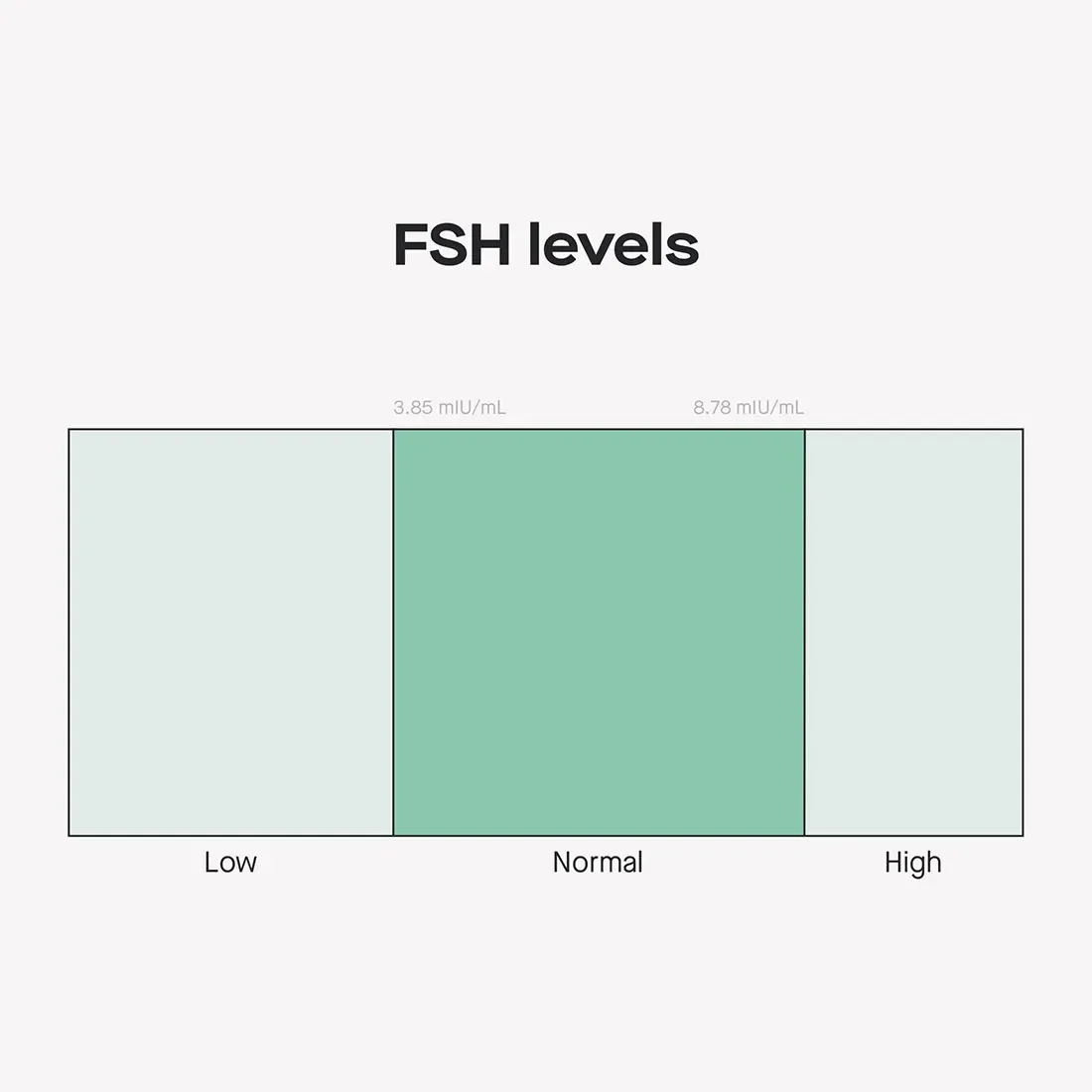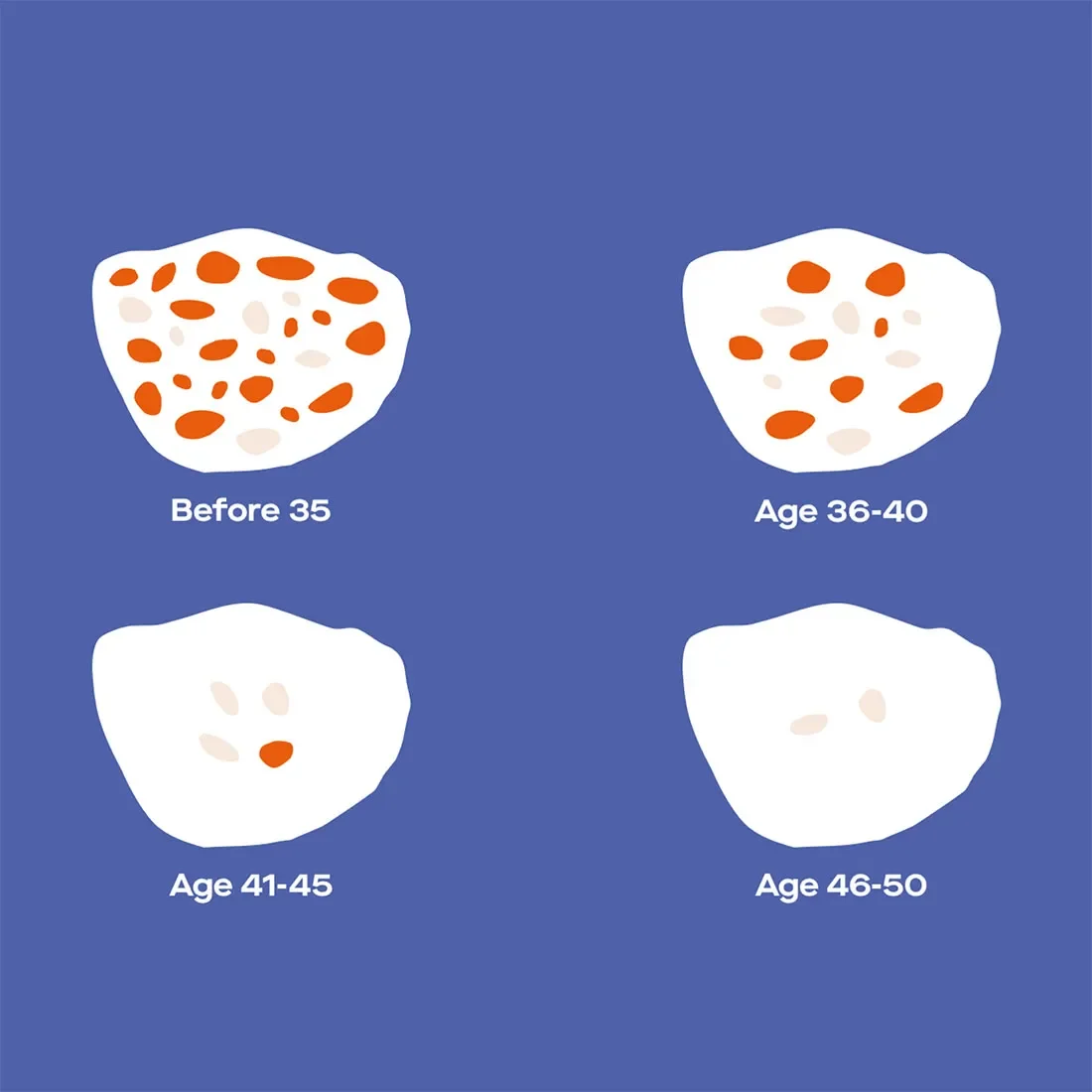Here's what we'll cover
Here's what we'll cover
Here's what we'll cover
Think of follicle-stimulating hormone, or FSH, as the gas in a car — when egg supply diminishes, your body hits the gas to give maturing follicles a little more oomph. Keep reading to learn why FSH should be on your hormonal radar.
What is FSH?
Follicle-stimulating hormone, or FSH, is a hormone produced by an area of the brain called the pituitary gland. It stimulates the follicles (which are the fluid-filled sacs that hold your eggs) in your ovaries to grow, initiating the process that culminates in ovulation.

FSH is produced in the pituitary gland in your brain
What is a normal FSH range?
A normal hormone level is typically determined by comparing your test result to a standard reference range. In the case of FSH, the standard reference range varies from one lab to another.
The normal FSH range for Modern Fertility’s at-home test is between 3.85 and 8.78 mIU/mL. (Keep in mind that since there isn’t a universal standard, our range may not be comparable with your results from other labs.)

Chart of FSH levels: low, normal and high
What do high FSH levels indicate?
Studies show that if you have high FSH, that could mean you have fewer eggs and your body needs to produce more FSH to mature the remaining follicles you have if any remain.
For context, postmenopausal women have consistently high FSH (typically over 25 mIU/mL) — and women with FSH levels over 15 might see less success with in-vitro fertilization (IVF).

High FSH could indicate fewer eggs
What do low FSH levels indicate?
If you have low FSH, that likely means you have a normal number of eggs. That’s because your body doesn’t have to produce extra FSH to get things moving.
How does FSH relate to AMH (and your ovarian reserve)?
FSH was one of the first biomarkers doctors used to assess ovarian reserve (or the estimate of many eggs you have). In recent years, AMH has also become a prominent marker. While FSH is released by the brain and works in tandem with estrogen, AMH is released by the follicles themselves.
For the most holistic view of ovarian reserve, physicians recommend measuring all of the fertility hormones — AMH, FSH, and E2 — on day three of your cycle.

FSH levels can affect fertility indicators
Can you test your FSH levels?
Yes! Just like you can test your cholesterol, you can also test your FSH levels — and Modern Fertility makes doing that at home easy. Every test comes with customized, physician-designed online reports. You also get:
A free 1:1 consult with a fertility nurse
A fertility planning tool that shows you what to expect and how to plan ahead
Access to our live Q&A sessions
An invite to the Modern Community to connect with others and get your questions answered

Test FSH hormone at home
DISCLAIMER
If you have any medical questions or concerns, please talk to your healthcare provider. The articles on Health Guide are underpinned by peer-reviewed research and information drawn from medical societies and governmental agencies. However, they are not a substitute for professional medical advice, diagnosis, or treatment.
References
Weghofer, A., Margreiter, M., Fauster, Y., Schaetz, T., Brandstetter, A., Boehm, D., & Feichtinger, W. (2005). Age-specific FSH levels as a tool for appropriate patient counselling in assisted reproduction. Human reproduction (Oxford, England) , 20 (9), 2448–2452. https://doi.org/10.1093/humrep/dei076










